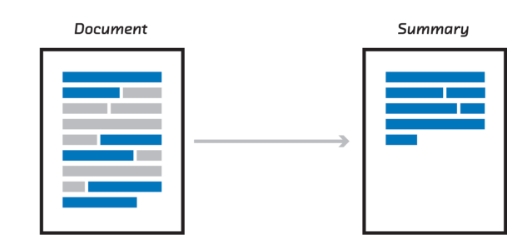Aug 25, 2016 · post
New TensorFlow Code for Text Summarization

Yesterday, Google released new TensorFlow model code for text summarization, specifically for generating news headlines on the Annotated English Gigaword dataset. We’re excited to see others working on summarization, as we did in our last report: our ability to “digest large amounts of information in a compressed form” will only become more important as unstructured information grows.
The TensorFlow release uses sequence-to-sequence learning to train models that write headlines for news articles. Interestingly, the models output abstractive - not extractive - summaries. Extractive summarization involves weighing words/sentences in a document according to some metric, and then selecting those words/sentences with high scores as proxies for the important content in a document. Abstractive summarization looks more like a human-written summary: inputting a document and outputting the points in one’s own words. It’s a hard problem to solve.
Like the Facebook NAMAS model, the TensorFlow code works well on relatively short input data (100 words for Facebook; the first few sentences of an article for Google), but struggles to achieve strong results on longer, more complicated text. We faced similar challenges when we built Brief (our summarization prototype) and decided to opt for extractive summaries to provide meaningful results on long-form articles like those in the New Yorker or the n+1. We anticipate quick progress on abstractive summarization this year, given progress with recurrent neural nets and this new release.
If you’d like to learn more about summarization, contact us (contact@fastforwardlabs.com) to discuss our research report & prototype or come hear Mike Williams’ talk at Strata September 28!










